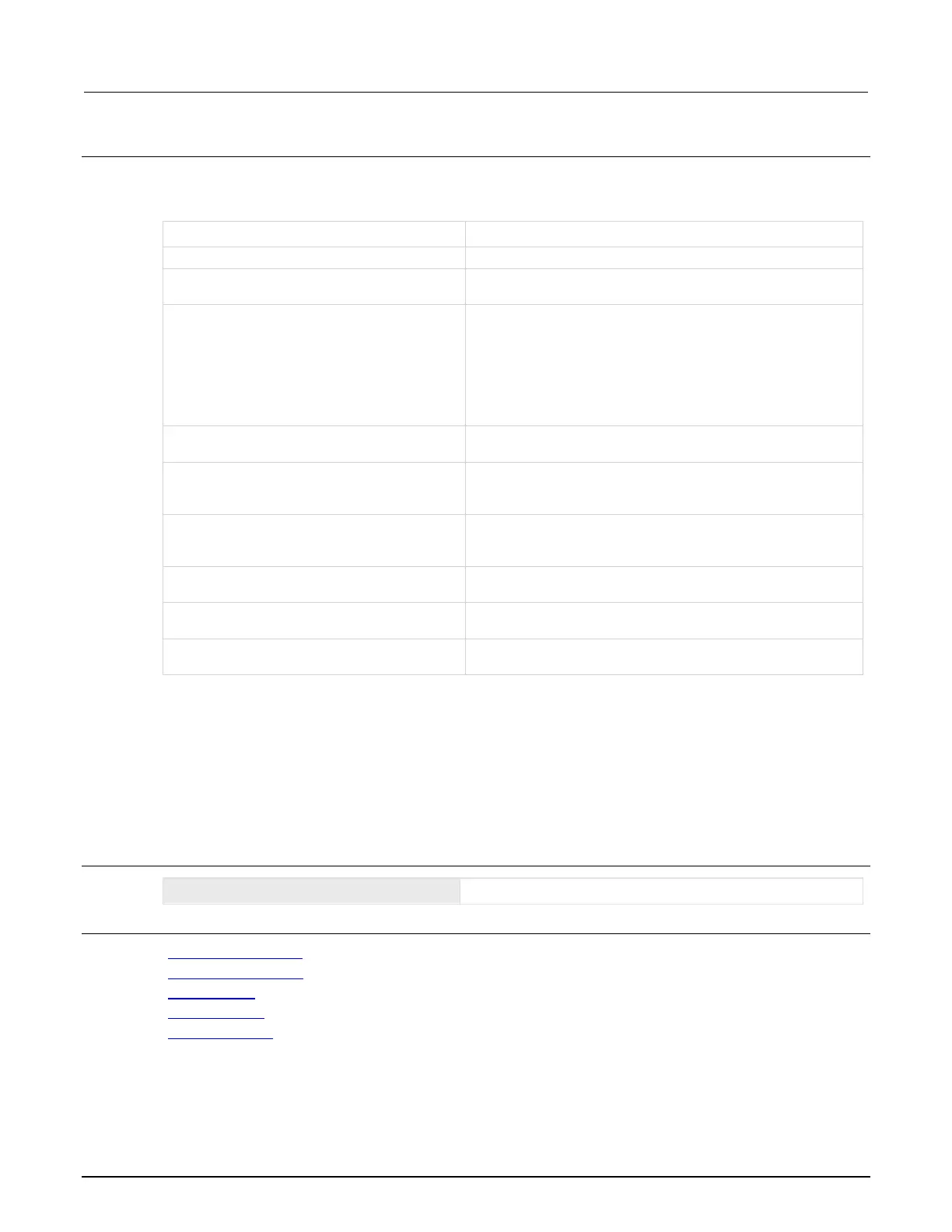Section 11: TSP command reference Model 2601B-PULSE System SourceMeter Instrument Reference Manual
11-46 2601B-PULSE-901-01A April 2020
Details
Set triggerMode to one of the following values:
Allows direct control of the line.
Detects falling-edge triggers as input; asserts a TTL-low pulse
for output.
If the programmed state of the line is high, the
digio.TRIG_RISING mode behavior is similar to
digio.TRIG_RISINGA. If the programmed state of the line is
low, the digio.TRIG_RISING mode behavior is similar to
digio.TRIG_RISINGM. This setting should only be used if
necessary for compatibility with other Keithley Instruments
products.
Detects rising- or falling-edge triggers as input. Asserts a
TTL-low pulse for output.
digio.TRIG_SYNCHRONOUSA or 4
Detects the falling-edge input triggers and automatically
latches and drives the trigger line low. Asserting the output
trigger releases the latched line.
digio.TRIG_SYNCHRONOUS or 5
Detects the falling-edge input triggers and automatically
latches and drives the trigger line low. Asserts a TTL-low
pulse as an output trigger.
digio.TRIG_SYNCHRONOUSM or 6
Detects rising-edge triggers as input. Asserts a TTL-low pulse
for output.
Detects rising-edge triggers as input. Asserts a TTL-low pulse
for output.
Asserts a TTL-high pulse for output. Input edge detection is
not possible in this mode.
When programmed to any mode except digio.TRIG_BYPASS, the output state of the I/O line is
controlled by the trigger logic, and the user-specified output state of the line is ignored.
Use of either digio.TRIG_SYNCHRONOUSA or digio.TRIG_SYNCHRONOUSM is preferred over
digio.TRIG_SYNCHRONOUS, because digio.TRIG_SYNCHRONOUS is provided for compatibility
with the digital I/O and TSP-Link triggering on older firmware.
To control the line state, set the mode to digio.TRIG_BYPASS and use the digio.writebit()
and digio.writeport() commands.
Example
digio.trigger[4].mode = 2
Sets the trigger mode for I/O line 4 to digio.TRIG_RISING.
Also see
digio.trigger[N].clear() (on page 11-44)
digio.trigger[N].reset() (on page 11-49)
digio.writebit() (on page 11-52)
digio.writeport() (on page 11-52)
Sweep operation (on page 4-61)

